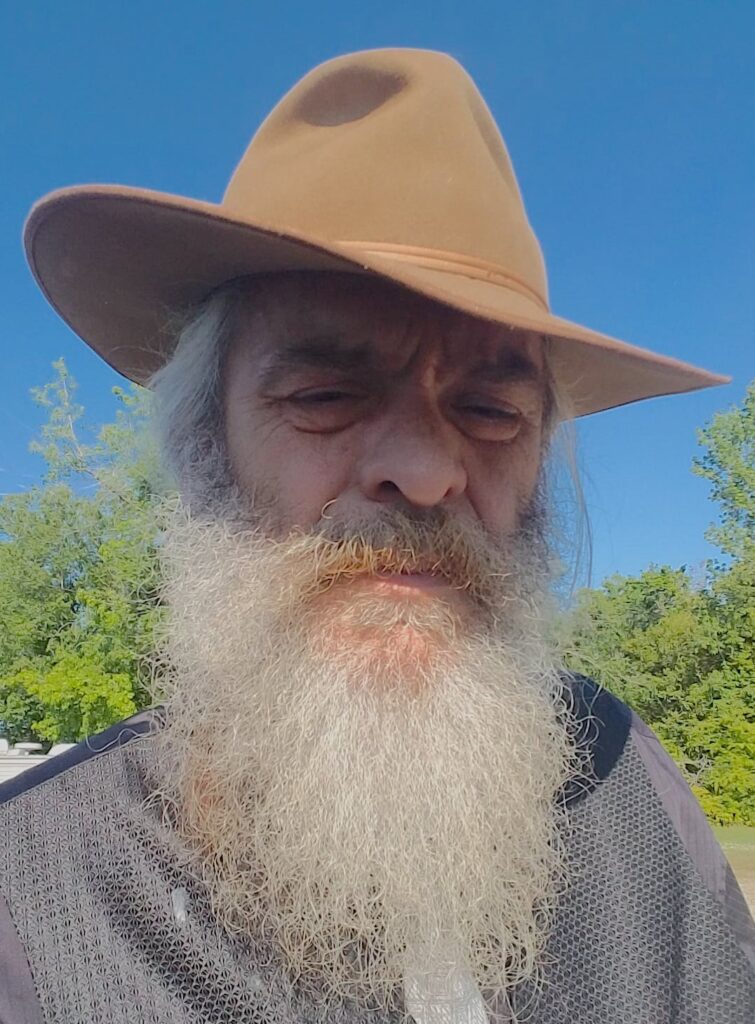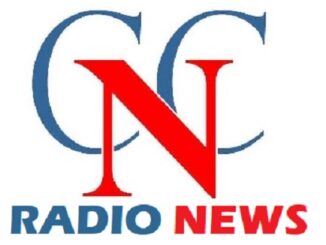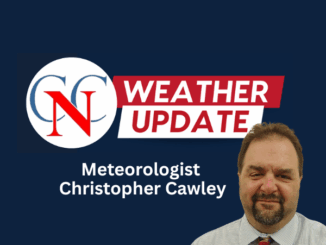
Note to my readers: I do not like to reprint columns, since I consider this to be a lazy habit. However, folks ask me about this one every year.
At a time where our country is so divided, I could find plenty of topics to address this week. The roots of those divisions have different names and different morals today, but the gardeners who tended those roots are much the same –people who benefit from continued strife when the ordinary American wants to sit down and work out problems, then get on with our lives. Sadly, politicians and powerbrokers are the same, regardless of their place in history.
We have to stop the strife, folks. We really ain’t that far from being in a bad place again, and we as Americans are better than that. We can disagree agreeably, as the saying goes, and vote as we feel is right if we want to change things.
The column below is an edited version of the piece by the same name which has been previously published.

Thomas Traylor watched.
Ellis Covert was likely sick.
Ben Weaver probably waited.
As important as Independence Day is to me as an America, I have to remember the date as a Southerner, too.
From July 1, 1863, until July 3, 1863, a lot of Americans, both Northern and Southern, had other things on their minds than the holiday barbecue or fireworks or beach trip, things many of us will enjoy this week.
As near as I’ve been able to research, I had 11 relatives who fought or served during the War Between the States. I won’t use the other, incorrect name for that war, because I am not a lemming, and refuse to follow the prevailing tide when it comes to names, especially when they are inaccurate.
Of my 11 relatives in The War, at least one, probably two, and possibly three were present when General Robert E. Lee’s army penetrated Pennsylvania and stopped off at a little village for shoes.
Thomas Traylor – only rarely was he called ‘Tom’, and then it was “Captain Tom” – was my father’s great-uncle. We have a silver cup Thomas won as the best shot in the Petersburg Light Infantry Grays, a militia unit which he eventually came to lead, for a while, as a regular unit of the Virginia troops. On July 3, Thomas was serving in a staff position. That likely saved his life, since his unit was one of those that crossed the fields in what is now known as Pickett’s Charge.
Thomas came from a wealthy family, and late in life, when my father knew him, “Captain Tom” was a gentleman’s gentleman. From the stories Papa and Aunt Eleanor (his daughter) told me, Captain Tom was the model Southerner. He was tall, sandy-haired, polite, and charming; he drank a little, but not much, and he was a decent businessman.
He was also – possibly – the only one of my relatives at Gettysburg who could read and write. He called the place “a field of pain and sorrow.”
Ellis Covert was likely anything but the classic Southern gentleman. Ellis was a great-uncle or whatever the cousin equivalent is, on my mother’s side of the family. He hailed from a place along the Chesapeake that featured good fishing and hardscrabble farms. Ellis was apparently a sickly man; I’ve found several mentions of him on sick rolls. Whether he had a nervous stomach or an incredible knack for saving his own skin, Private Ellis Covert, fisherman, height 5’4”, unmarried, had a tendency to end up on the sick rolls before major events like Fredericksburg, the Valley Campaign, and yes, Gettysburg.
Ben Weaver is one of those relatives all good Southern families like to forget. He too had a peculiar skill – that of being able to desert to the enemy, return to another unit from Virginia, then desert later if the mood suited him. How he never got shot I’ll never understand.
Ben is missing from his unit’s rolls after about March of ’63, and another Ben Weaver turned up on the roster of a Pennsylvania unit in April, according to one of my genealogic-obsessed kinfolk. As the Pennsylvania unit was in the same area as the Virginia unit at that time, I have to wonder if the Yankee Ben and the Confederate Ben were the same. The Northern unit was there on July 3, 1863.
I thought about my three ancestors – such a pretentious word, that word ancestor, but correct– and those of thousands of other Americans when I was at Gettysburg one year on July 3. I was a member of a living history group that was participating in what was billed as the largest ever reenactment of the Battle of Gettysburg. We arrived in Fairfield, Gettysburg’s lovely cousin, just after three in the morning.
We were what is often called “hard-core” reenactors, so we were dressed in our period uniforms for the whole trip, causing some amusement in restaurants along the way. Fairfield was a quiet town at 3 a.m., so we threw our blankets out and slept in a grassy parking lot. We drew a lot of attention as the town awoke and started its day to find us there. We found out later that, in 1863, the bodies of wounded soldiers who died in a nearby home-turned-hospital had been piled where we slept.
One of our party had never been to the national park at Gettysburg, so after a big breakfast in a cool restaurant we headed out to the battlefield, guidebooks in hand, square-toed shoes on our feet.
Three of us had decided we were going to cross the field where Pickett’s Charge took place. While we couldn’t carry our muskets on the park, there were no rules against other appurtenances, so we slung our foodbags, blanket rolls, and canteens, and started walking. Paul promised to meet us in the other side, where exact spot of the so-called “High Tide of the Confederacy” is marked with a simple monument.
The cannons behind us were silent, but the park was far from quiet. Tourists from all over the world were visiting Gettysburg, as they do every July 4, and we were never far from the sound of cars winding their ways up the Emmitsburg Pike.
All of us were in good physical condition, and well-hydrated; we had driven to the battlefield in a comfortable van after a good breakfast. Then there was the little advantage that no one was shooting at us. The temperature that day was cooler than it was when the men of Pickett and Pettigrew and Armisted and the others crossed the field into waiting Federal gunfire so thick that bullets actually struck each other in mid-flight.
Yet, halfway across the overgrown field we wondered if we had made a bad mistake.
Our flatland feet faltered in the furrows from the previous year; a stream running through the field was a blessedly cool place to bathe our hands, but it caused a bog that sucked and stuck and held us as we struggled through. A deer flashed past us, disturbed from its morning nap. The tall grass cut our hands and faces, and more than once one of us needed the other two to recover from a stumbling fall.
Our canteens were dry before we even reached the stream, but the woolen janes-cloth of our uniforms was soaked with sweat and morning dew. Woolen socks are grand for dry marching, but they slip and slide and feel nasty after being soaked.
As we reached the three-quarter mark, Moe, Dean and I became separated; the grass was too thick to see to the sides, but by looking ahead and up I could see I was getting closer to the road.
Moe and Dean came out a couple hundred yards down from our original destination; I was lucky enough that I was on the mark. They waved and started toward me, and I stopped for a moment to catch my breath.
Far behind me the line of cannons shimmered in the growing heat. Brightly-clad tourists were taking photographs of smiling kids sitting on the old smoke-poles, their muzzles and vents blocked so they could never again speak with authority.
Ahead of me, across the now-paved road, was a split rail fence. It was along a similar fence and a stone wall that the Confederacy came within a few yards of changing the course of the war and our country; I had to move on.
The steel plates on my heels clicked oddly on the pavement, and my canteen banged lonely against my hip. I climbed over the fence, probably violating some federal law in the process, and made my way to where a simple square monument barely peeked out of the overgrown grass.
It was at that spot, the marker said, that a group of stubborn and likely scared Tar Heels were the “farthest at Gettysburg.” I leaned over and looked at the marker; even though I am by heritage a Virginian, I am a North Carolinian by birth, and I thought I should see something special on the spot.
Sadly, I didn’t. It was just a little marker the size of a tombstone. It didn’t even have the eloquent prose so common on many of the other markers we’d visited, the same ones being photographed by happy tourists.
I wondered why.
I wondered what could have driven men of disparate backgrounds, but a common nation, to fight so hard for what they believed was right, or just because they loved their comrades. I wondered how many truly fought for the right to own or free other human beings, as the history books claim, and how many fought for the love of their homes, as did Captain Tom, who abhorred slavery.
My eyes filled with tears that morning as I thought of those who made it this far, only to be forced back; I cried, too, for those who held to their posts here, fighting back an invader.
My buddies teased me as they came up – I hadn’t noticed the charter bus full of Japanese tourists. They snapped pictures and laughed and cheered. Several clapped their hands and smiled.
I had shed no blood on that field, save that which I left on stems of sharp grass along the way. I never had to face a real bullet during that weekend or any other at Gettysburg and a couple dozen other reenactments. I wasn’t hungry, and I didn’t have to be thirsty.
I wanted to fuss at the tourists, but I didn’t know what I would say to them.
I couldn’t even tell them that they were standing on what, to me, was holy ground – a field of pain and sorrow.


























